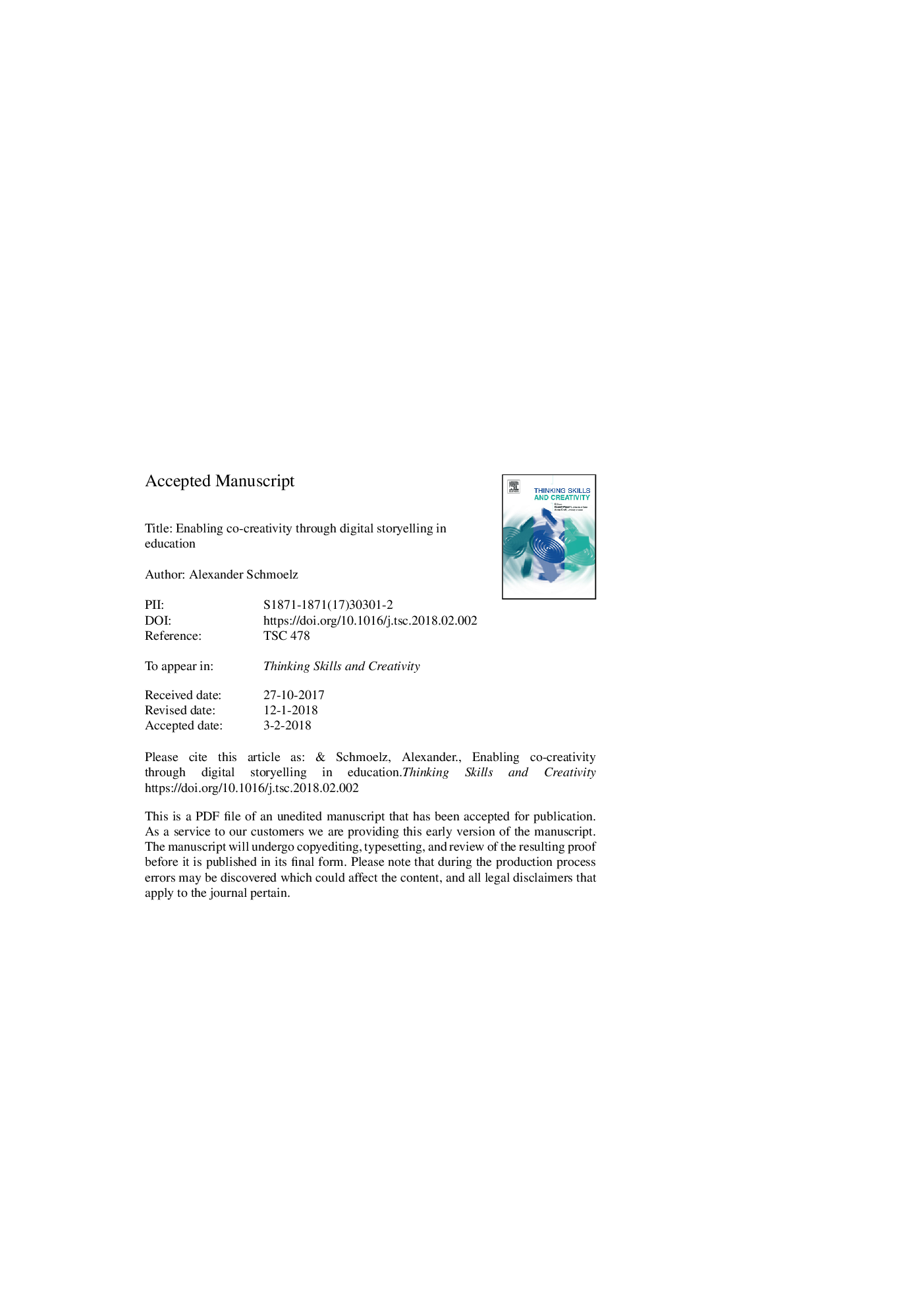| Article ID | Journal | Published Year | Pages | File Type |
|---|---|---|---|---|
| 6851820 | Thinking Skills and Creativity | 2018 | 27 Pages |
Abstract
This article asks how students interact in classroom activities that use digital storytelling to enable co-creativity. The study is guided by a qualitative methodology and builds on five case studies in classes at lower and upper secondary level. Each case study consists of classroom activities that encompass one week, and 25 students; culminating at 119 lessons and 125 students. Classroom activities were facilitated by teachers or pre-service teachers. Digital tools were used to engage students in digital storytelling. Data collection involved interviews and group discussions with students and teachers as well as field notes and videography of classroom activities. The Documentary Method was utilized to interpret research material and construct knowledge regarding students' interactions in classroom activities that aim for co-creativity. Based on a constant comparison of the different case studies, common themes are established regarding how students interact in classroom activities that use digital storytelling to enable co-creativity. Findings show two relevant phases of digital storytelling. In the digital story-writing phase, students manifested two categories of co-creativity â engaged action and control. Students change different forms of engagement and immersive densities of engaged action through giving, taking, sharing or limiting control in the digital story-writing activities. In the digital story-producing phase, students experienced co-creative flow as shared enjoyment and fun that emerged through full immersion in the digital story producing activities, in which control and rationality were absent.
Related Topics
Social Sciences and Humanities
Psychology
Developmental and Educational Psychology
Authors
Alexander Schmoelz,
